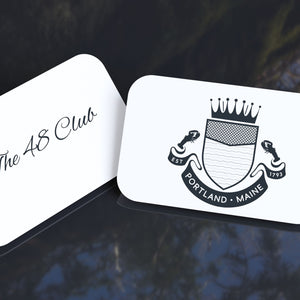How to Cook Huge Lobster Claws
Katrina CrowellShare
Are you tired of dealing with the hassle of defrosting lobster claws whenever you want a scrumptious seafood meal? Well, we've got you covered! This article will walk you through the simple steps of cooking frozen lobster claws, so you can go from freezer to a fabulous feast without any fuss.
From Freezer to Feast: Cooking Frozen Lobster Claws Made Easy
With our easy-to-follow instructions, you'll learn how to thaw and cook frozen lobster claws just right. Whether you're hosting a dinner party or just treating yourself to a fancy meal, this guide will ensure your lobster claws turn out tender, juicy, and bursting with flavor.
No need to worry about losing the taste and texture of fresh lobster; we'll spill the beans on how to keep that ocean-fresh goodness when using frozen lobster claws. Get ready to impress your guests or satisfy your seafood cravings with this ultimate guide to cooking frozen lobster claws.
Don't let the idea of frozen seafood deter you from enjoying your favorite delicacy. Stick around to uncover the best techniques and recipes for turning frozen lobster claws into a culinary masterpiece. Let's dive in and unlock the secrets of cooking these frozen treasures!
How to Properly Thaw Frozen Lobster Claws
Cooking frozen lobster claws has its perks, making it a practical choice for seafood lovers. Here's why you should consider using frozen lobster claws:
Year-round availability: Frozen lobster claws are available year-round, so you can enjoy them anytime.
Convenience: Keep frozen lobster claws in your freezer until you're ready to use them, making meal planning a breeze.
Cost-effective: They're often more budget-friendly than fresh lobster claws.
Extended shelf life: Frozen lobster claws last longer, reducing the risk of waste and ensuring you always have a seafood option on hand.
By using frozen lobster claws, you can enjoy the convenience, affordability, and year-round availability while savoring that delectable seafood taste.
Preparing Frozen Lobster Claws for Cooking
Thawing frozen lobster claws is essential to ensure even cooking and preserve their delicate taste and texture. Follow these steps to thaw your frozen lobster claws properly:
Choose the right thawing method: You have two options - refrigerator thawing or cold water thawing.
- Refrigerator thawing: Place the frozen lobster claws in a covered container and let them thaw in the refrigerator overnight. This method is safe and convenient, preserving the lobster meat's quality.
- Cold water thawing: If you're short on time, use the cold water method. Put the lobster claws in a leak-proof plastic bag and submerge it in cold water. Change the water every 30 minutes. Thawing time depends on the claw size but usually takes about 30 minutes per pound.
Inspect and pat dry: After thawing, check for any freezer burn or damage. Trim off discolored or freezer-burned parts. Pat the claws dry with paper towels to remove excess moisture before cooking.
Handle with care: To prevent cross-contamination, wash your hands thoroughly before and after handling the claws. Ensure utensils and surfaces are clean for hygiene.
Proper thawing is crucial for top-quality cooked lobster claws. Take your time, and you'll be rewarded with succulent, flavorful results.
Cooking Methods for Frozen Lobster Claws
Before cooking your thawed lobster claws, prepare them with these essential steps:
Crack the shells: Use a lobster cracker or kitchen shears to carefully crack the shells. This makes it easier to remove the meat while keeping the claws intact.
Remove the meat: Gently pull apart the cracked shells to expose the lobster meat. Carefully remove the meat, ensuring no shell fragments remain. Discard the shells.
Optional cleaning: Some claws may have sand or debris; rinse them under cold running water if needed. Pat the meat dry with paper towels after rinsing.
Cracking the shells and removing the meat makes cooking and serving lobster claws a breeze, ensuring a delightful dining experience.

Recipes and Ideas for Cooking Frozen Lobster Claws
Now that your lobster claws are thawed and prepped, let's explore different cooking methods to bring out the best flavors. Here are some popular ones:
Steaming: Steam lobster claws for 8-10 minutes for sweet, tender meat.
Boiling: Boil claws for 5-8 minutes for a quick, straightforward approach.
Grilling: Grill claws for 5-7 minutes per side for a smoky, charred flavor.
Feel free to get creative with broiling, baking, or pan-searing. Cook until tender, juicy, and perfect for your taste.
Tips for Serving and Enjoying Cooked Lobster Claws
To elevate your dining experience, consider these tips:
Garnish and presentation: Sprinkle fresh herbs like parsley or chives on your lobster claws for a fresh look. Serve them on a platter with lettuce or seaweed for an elegant touch.
Dipping sauces: Offer various dipping sauces like melted butter, lemon aioli, or cocktail sauce to enhance the flavors.
Pairing suggestions: Pair lobster claws with side dishes like mashed potatoes, steamed veggies, or a crisp white wine. A salad or coleslaw can balance the richness of the lobster meat.
Enjoying lobster claws isn't just about taste; it's about the whole experience. Set a beautiful table, gather your loved ones, and savor every bite for a memorable meal.

FAQs About Cooking Frozen Lobster Claws
Q: Can I cook frozen lobster claws without thawing them?
A: Thawing is best for even cooking and preserving meat quality.
Q: Can I refreeze cooked lobster claws?
A: It's not recommended, as it can affect texture and taste.
Q: Can I use frozen lobster claws in recipes that call for fresh lobster?
A: Yes, just thaw and cook according to the recipe.
Q: Are frozen lobster claws as flavorful as fresh ones?
A: While fresh is preferred, properly cooked frozen claws still offer a delightful seafood experience.
Final Thoughts
Cooking frozen lobster claws doesn't have to be daunting. With the right steps, you can enjoy a delicious seafood feast any time of year. So, grab those frozen claws, follow our guide, and get ready for a seafood extravaganza!










